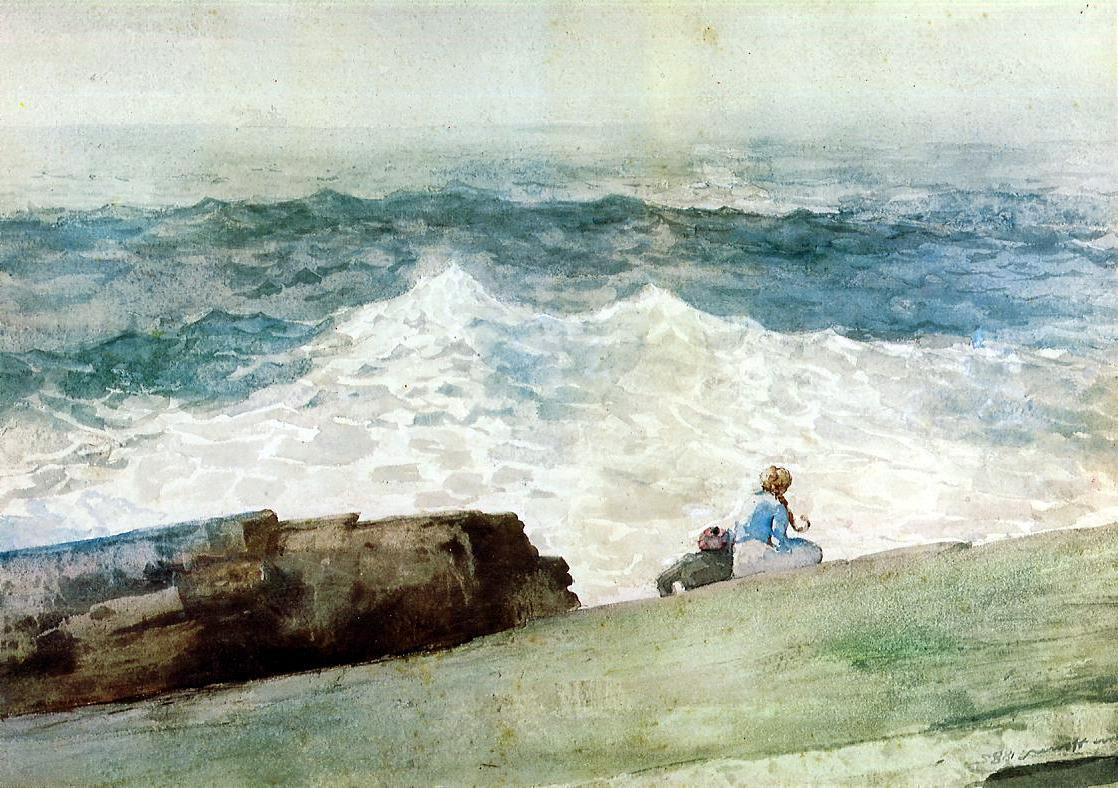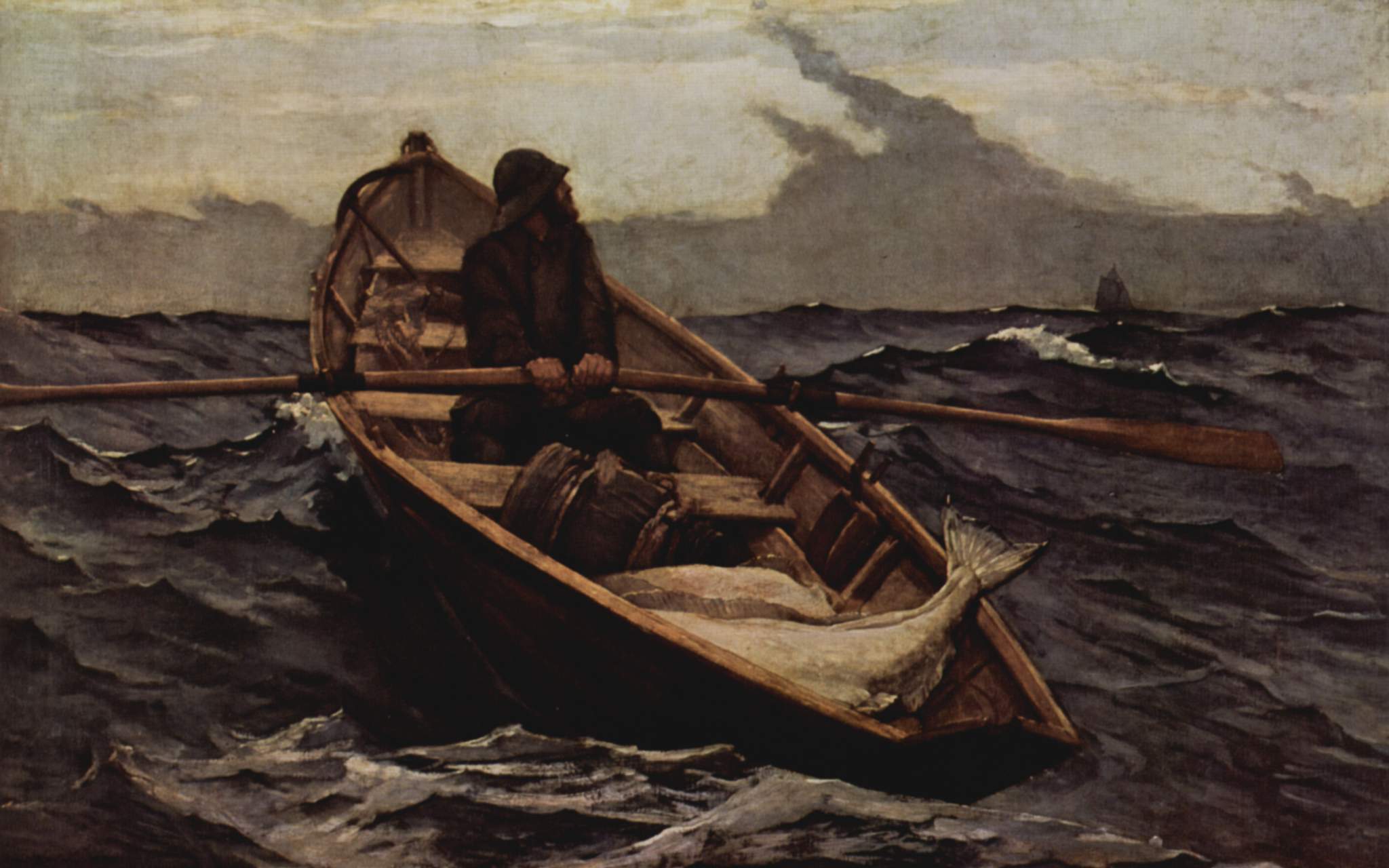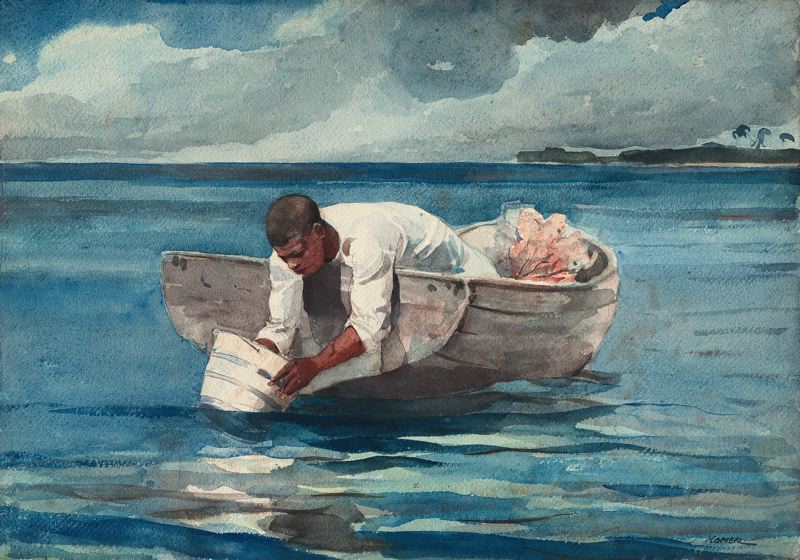Winslow Homer
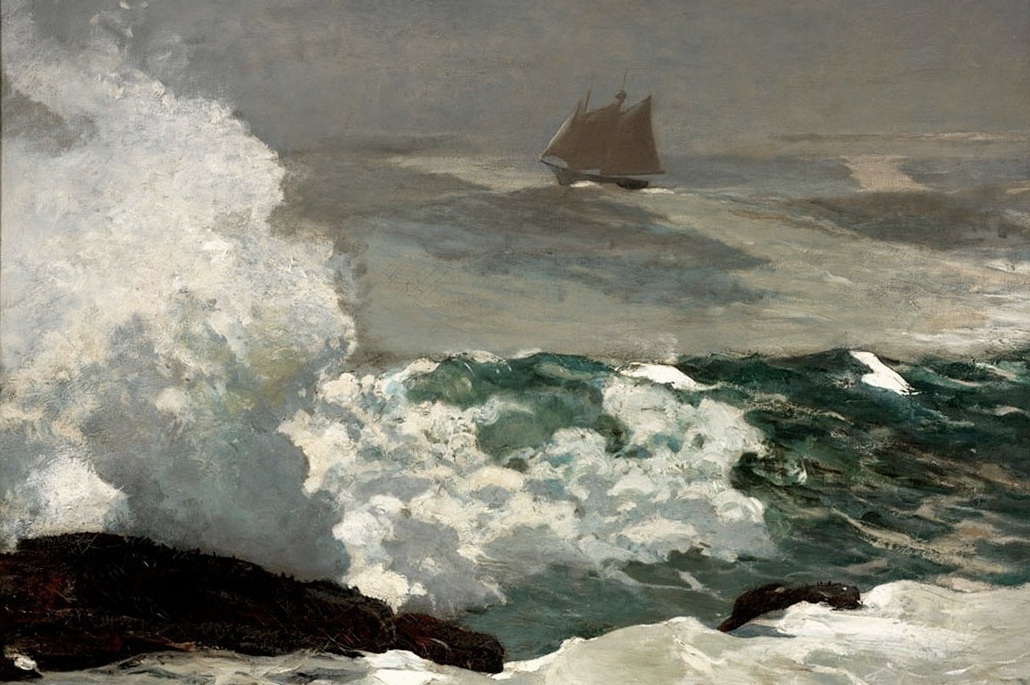 Here are some paintings by the 19th century American artist Winslow Homer. He was born in Boston and died in 1910 at the age of 74. He is perhaps best known for seascapes featuring the New England shore, especially Maine. His Wikipedia entry is here. It is interesting to note that he is largely self taught but worked as an illustrator for mazazines for many years before he began painting in earnest. Illustration is a great training and formation for an artist and something worth considering today when so few art degrees actually involve teaching the skills of drawing and paitning.
Here are some paintings by the 19th century American artist Winslow Homer. He was born in Boston and died in 1910 at the age of 74. He is perhaps best known for seascapes featuring the New England shore, especially Maine. His Wikipedia entry is here. It is interesting to note that he is largely self taught but worked as an illustrator for mazazines for many years before he began painting in earnest. Illustration is a great training and formation for an artist and something worth considering today when so few art degrees actually involve teaching the skills of drawing and paitning.
Homer controls his use of colour and focus very much in line with the baroque way of looking at things, although no 17th century baroque artist would have painted precisely as he did. I think of him as one of those 19th century artists who continued to work in landscape especially in such way that it actually builds on what happened 200 years earlier in a constructive way. Another example of such an artist for me would be John Singer Sargent. So while much that was happening in the 19th century was not good - especially in sacred art - in landscape especially a few artists are worth of study.
Homer has a great compositional sense. He often paints with lateral lines, perhaps waves rolling into the shore, but then introduces sweeping diagonals that move the eye up and down and open up the whole painting to the natural passage of the eye it follows the lines of strong tonal and colour contrast. In the example above, it is with the foam and spray of a wave crash on a rock that takes the eye up and down. In other examples he might have the boat being thrown around in a choppy sea so that the bow breaks the horizon line while the stern extends into the foreground.
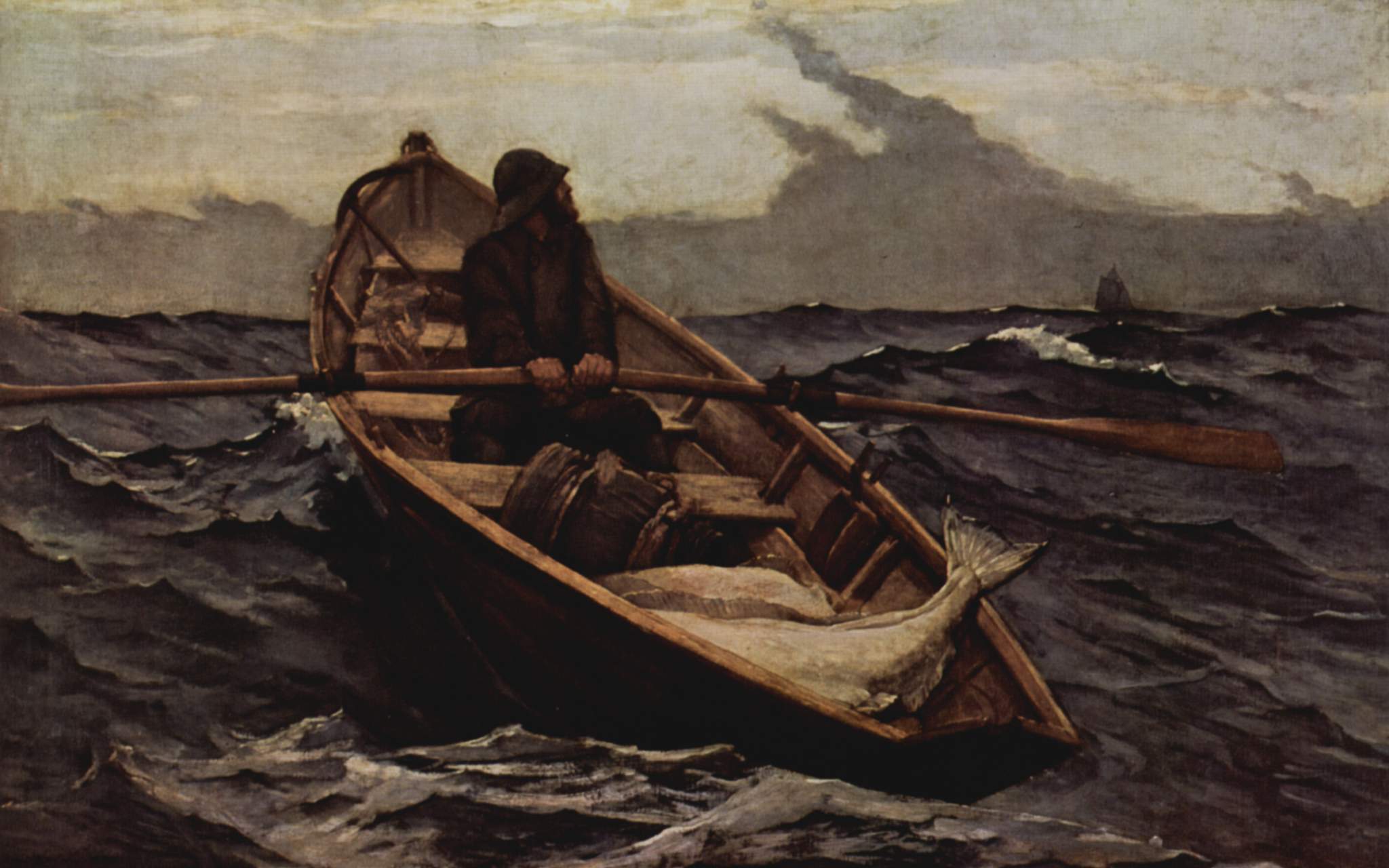 Also we are fortunate in that we many examples of watercolours as well a oils. I am guessing that the watercolours are the more spontaneously painted, while the oils will be more studio based. Watercolours are useful because they are painted relatively quickly and so indicate the intuitive response (I mean visual not emotional - I am talking about how he sees) of the artist to nature and how he approaches capturing that visual impression.
Also we are fortunate in that we many examples of watercolours as well a oils. I am guessing that the watercolours are the more spontaneously painted, while the oils will be more studio based. Watercolours are useful because they are painted relatively quickly and so indicate the intuitive response (I mean visual not emotional - I am talking about how he sees) of the artist to nature and how he approaches capturing that visual impression.
It seems that it was two years spent in the northeast of England that changed him from an illustrator and poor painter into a mature artist. During this period his did nothing but paint watercolours. On his return to the US critics noted the change. His palette was more restrained and the compositions more powerful. The first painting shown below is painted in England. It is of fisherwomen in Cullercoats (in the modern county of Tyne and Weir).

